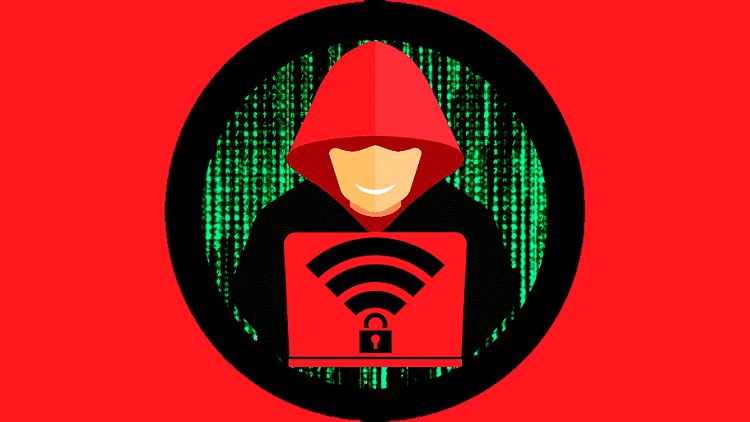- Joined
- 18 Apr 2025
- Messages
- 14
- Reaction score
- 0
- Points
- 1
Wifi Hacking Complete course for beginners
Wifi hacking course
WiFi Hacking Full Course Wifite WPS Attack Wifite WPA Attack Wifite PMKID Attack Wifite Kali Linux Fern WiFi Cracker Reaver WiFi Jammer Deauthenticate a Network Client Advanced WiFi Jamming with WiFiDoser Create Multiple Fake AP WiFi Admin Panel Attack WiFi Multi Tool Attack On A Single Network
WiFi hacking refers to unauthorized attempts to access and manipulate wireless networks. This field encompasses a variety of techniques and tools used to violate WiFi security protocols. Understanding WiFi hacking requires a solid foundation in networking, cryptography, and cybersecurity principles. This comprehensive guide will cover the essentials of WiFi hacking, including its history, types of attacks, tools, legal and ethical considerations, and preventative measures. **History and Evolution of WiFi Hacking** WiFi hacking has evolved alongside wireless technology. Early WiFi networks used WEP (Wired Equivalent Privacy) encryption, which quickly proved insecure. Hackers developed tools like AirSnort and WEPcrack to exploit WEP's weaknesses. The introduction of WPA (WiFi Protected Access) and later WPA2 offered improved security, but these protocols also have vulnerabilities that hackers can exploit. Today, WPA3 aims to provide stronger protection, but the arms race between security measures and hacking techniques continues.
Types of Wi-Fi Attacks** Wi-Fi hacking involves different types of attacks, each with distinct methods and objectives: 1. **Packet Sniffing**: This technique involves capturing data packets transmitted over a wireless network. Tools like Wireshark allow hackers to intercept and analyze these packets, potentially revealing sensitive information such as passwords and personal data. 2. **Rogue Access Points**: Hackers can set up fake access points to trick users into connecting. Once connected, the attacker can monitor and manipulate the user's traffic. 3. **Evil Twin Attack**: Similar to rogue access points, an evil twin attack involves creating a malicious network that mimics a legitimate network. Unsuspecting users connect to the evil twin, allowing the hacker to intercept their data. 4. Deauthentication Attack: This type of attack forces devices to leave a network by sending deauthentication frames. The attacker can then capture the handshake process as the device attempts to reconnect, which can be used to crack the network password. 5. Password Cracking: By capturing the handshake process, hackers can use brute-force or dictionary attacks to crack WiFi passwords. Tools like Aircrack-ng are commonly used for this purpose. 6. WPS Attacks: WiFi Protected Setup (WPS) is a feature designed to simplify the process of connecting devices to a network. However, it has significant vulnerabilities that can be exploited by tools like Reaver.
Tools and Techniques** Several tools are essential for WiFi hacking, each with a specific purpose: 1. **Aircrack-ng**: A suite of tools for monitoring, attacking, testing, and decrypting WiFi networks. It includes tools like airmon-ng, airodump-ng, aireplay-ng, and aircrack-ng. 2. **Wireshark**: A network protocol analyzer that captures and displays data packets in real time, useful for packet sniffing and network analysis. 3. **Reaver**: A tool designed to exploit WPS vulnerabilities, allowing hackers to recover the WPA/WPA2 passphrase. 4. **Fern WiFi Cracker**: A Python-based tool for auditing and attacking wireless security. 5. **Kismet**: A network detector, sniffer, and intrusion detection system for 802.11 wireless LANs. 6. **Hashcat**: A powerful password cracking tool that supports a variety of hashing algorithms. **Legal and Ethical Considerations** WiFi hacking, when done without authorization, is illegal and unethical. Unauthorized access to wireless networks can lead to serious legal consequences, including fines and imprisonment. Ethical hacking, however, involves performing security assessments with the owner's consent to identify and fix vulnerabilities. Ethical hackers, also known as white hat hackers, play a crucial role in improving network security.
Preventive Measures** Protecting Wi-Fi networks from hacking involves implementing several best practices: 1. **Strong Passwords**: Use complex and unique passwords for your Wi-Fi network. Avoid using common phrases or easily guessable information. 2. **WPA3 Encryption**: Whenever possible, use WPA3 encryption for enhanced security. If WPA3 is not available, WPA2 with a strong passphrase is the next best option. 3. **Disable WPS**: Disable Wi-Fi Protected Setup to prevent WPS attacks. 4. **Regular Updates**: Keep your router firmware and all connected devices up to date with the latest security patches. 5. **Network Segmentation**: Create separate networks for different types of devices (e.g., guest network, IoT devices) to limit the impact of a potential breach. 6. **Monitor Network Activity**: Regularly check for unauthorized devices connected to your network and monitor any unusual activity. 7. **Use VPNs**: Virtual Private Networks (VPNs) add an extra layer of security by encrypting internet traffic, making it harder for hackers to intercept data. 8. **Firewalls**: Implement firewalls to block unauthorized access and monitor incoming connections. **Conclusion** WiFi hacking is a complex field that requires a thorough understanding of networks, security protocols, and ethical considerations. While the tools and techniques used in WiFi hacking can be powerful, they must be used responsibly and legally. By staying informed about the latest threats and implementing robust security measures, individuals and organizations can protect their wireless networks from malicious attacks. This comprehensive guide provides the basic knowledge needed to understand WiFi hacking and highlights the importance of ethical cybersecurity practices.


